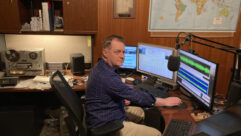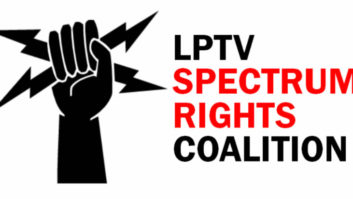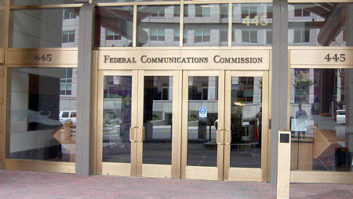This is an updated version that corrects licensee information for WNYZ.
WASHINGTON Some crafty low-power television broadcast licensees on TV Channel 6 are ditching regular TV programming and using their spectrum instead to program commercial FM stations and pursue radio audiences.
As controversial as this might appear, legal analysts say the TV stations seem to be working within the rules of the Federal Communications Commission. However, the practice certainly does not appear to be what the FCC intended when it crafted LPTV rules.
This idea of edging a presence into the lower end of the FM band appears to be gaining in popularity, observers told Radio World, and sources say it has drawn the attention of the FCC, though the commission declined to comment specifically on the question of LPTV licensees marketing themselves as FM radio stations. It is not clear whether official complaints have been filed.
TV Channel 6 spectrum is next door to the lower end of the FM band, at 82 to 88 MHz. Audio for TV Channel 6 is broadcast at 87.75 to 87.9 MHz. Many car and tabletop FM receivers are able to receive these adjacent TV audio signals (indeed, some Channel 6 TV licensees promote that fact).
But the stations in question here are providing minimal video programming and pitching themselves as commercial radio stations. In one case, an LPTV licensee allegedly is broadcasting nature video over and over again.
“It is happening,” said John Crigler, a communications attorney with Garvey, Schubert and Barer. “Apparently these licensees are not asking for authority to do this kind of thing. They are just doing it, and it appears that they are within the rules to do so. However, it appears the FCC is reviewing the matter again and deciding how to proceed. This is obviously not the FCC’s intended purpose of low-power TV.”
Bite of the Big Apple
An example is WNYZ(LP) in New York, the nation’s most populous market, where FM spectrum is an extremely valuable commodity.
The station is a 3 kW LPTV licensed to Island Broadcasting Co. Mega Media Group leases the channel from Island. The TV station typically broadcasts video of nature scenes and travelogues repeated throughout the day, said Alex Shvarts, chief executive officer of Mega Media Group. Its programming content is music transmitted on the audio subcarrier at 87.75 MHz. The TV station promotes itself on www.pulse87.com as “Pulse 87 — Pure Energy.” Shvarts told RW that WNYZ(LP) is operating within the rules governing low-power TV. “The FCC is aware of what we are doing. I’m not aware of any concern on their part.” (See sidebar.)
The Pulse WNYZ(LP) may transmit television nature images across New York City on Channel 6, but it’s clear the station’s focus is on radio, with TV being of minor consequence. With a dance-intensive rhythmic top 40 format, Pulse 87.7’s signal reaches the city’s five boroughs and most of Long Island, according to people familiar with the station.
Joel Salkowitz, the station’s program director, is an alumnus of music station WQHT(FM) in New York. He described the station’s format to Web site All Access as “top 40/rhythmic, leaning away from rock and rap and more towards club and dance sounds in their place. It’s familiar rhythmic hits mixed with the very best new music.”
Mega Media Group, which leases the channel from licensee Island Broadcasting Co., is a multimedia entertainment holding company with several subsidiaries that offer a range of services including music production and distribution and video production.
Mega CEO Alex Shvarts believes that WNYZ(LP) is operating within the FCC’s rules governing low-power TV.
“We are fulfilling obligations as a licensee. It’s perfectly legal to send audio separate from video. We operate (Pulse 87.7) under the audio portion of our LPTV license. The FCC is aware of what we are doing. I’m not aware of any concern on their part,” Shvarts said.
Mega Media has marketed itself as a radio station since 2005. The company announced earlier this year that Pulse 87.7 is being rated under the Arbitron Portable People Meter system. Mega claims the radio station had more than half a million listeners and 540,700 Cume persons age 6 and older during one specific week in September.
Shvarts said he is not sure what will happen to Pulse 87.7 if and when the FCC mandates a transition of LPTV stations from analog to digital TV. A switch to digital would leave consumers unable to receive the audio at 87.75 MHz.
“We will worry about that when it happens. We expect the commission will give us a long transition period to figure it out.”
— Randy J. Stine
The legal argument Shvarts makes is based on Sec. 73.653 of the FCC rules governing low-power television licensees, which states: “Operation of TV aural and visual transmitters … the aural and visual transmitters may be operated independently of each other or, if operated simultaneously, may be used with different and unrelated program material.”
Several attempts for this article to reach other licensees who are practicing the same business model were unsuccessful. Publications including the newsletter CGC Communicator have cited instances in the Chicago, Los Angeles and Dallas areas, and several “TV as FM” operations are identified on Wikipedia and other online sources.
In 1999, according to legal observers, the FCC staff ruled that LPTV broadcast stations must transmit both visual and aural services to remain in compliance.
That ruling was the result of a complaint by several radio stations in Anchorage, Alaska, which claimed that KZND, a low-power TV station, was “operating as an FM radio station, broadcasting only an audio signal and marketing itself as an FM station that can be received at the bottom of the dial.”
The FCC found that KZND(LP) was violating the commission’s low-power television rules and policies by transmitting an aural-only service.
Crigler said the commission “basically said there had to be simultaneous transmission of visual and aural content. … It does not specify what kind of visual content. And the audio and video does not have to be related or synchronized. However, it’s clear that these LPTV stations cannot be aural-services only. They need a visual carrier, too.” He said he was unaware of any appeal filed in the case by the licensee, Fireweed Communications Corp., which also operates one of the stations listed in the sidebar.
“The advantage these LPTV broadcasters have is that they are at the bottom of the FM band and they realize that it is a lot cheaper to play records than to cultivate TV programming,” said Harry Cole, a communications lawyer with Fletcher, Heald and Hildredth, who is also a Radio World columnist.
“They are within the rules. There is nothing to say that you can’t separate video and audio. Plus, they sound much different than anyone else at that chunk of the FM band.”
TV Channel 6 also is immediately adjacent to the noncommercial portion of the FM band, not an area where you would typically find a “commercial-sounding radio station,” Crigler noted.
LPTV sunset
Some broadcasters and their attorneys are not so sure about the legality of the practice, which is why the commission is looking into the matter, sources not quoted elsewhere in this article told RW.
One observer thinks this is a big deal.
As Long as the Mood Is Right … FM

Here is a partial list of low-power television stations licensed at Channel 6 that appear to be operating predominately as radio stations. The list was compiled using Wikipedia and the FCC database. Tell us about such stations in your area; write to [email protected]:
KCIO(LP), Victorville, Calif.
Almavision Hispanic Network
www.almavisiontv/6.html
www.justin.tv/almavisonradio
KESU(LP), Hanamaulu, Hawaii
Chang Broadcasting Hawaii LLC
en.wikipedia.org/wiki/KESU-LP
KFMD(LP), Redding, Calif.
KEFM(LP), Chico, Calif.
Venture Technologies Group LLC
en.wikipedia.org/wiki/KFMD-LP
K060L, Antelope Valley, Calif.
Adelman Broadcasting
www.betoradio877.com
KOAN(LP), Anchorage, Alaska
Fireweed Broadcasting
en.wikipedia.org/wiki/KOAN-LP
KSFV(LP), San Fernando Valley, Calif.
Venture Technologies Group, LLC
www.guadaluperadio.com
WNYZ(LP), New York, N.Y.
Island Broadcasting Co.
www.pulse87.com“I believe that the use of TV frequency spectrum as an FM broadcast station, not transmitting any discernible visual signal, is in serious violation of the FCC rules,” said Edward Tipler, president of Kitchen Productions Inc., a broadcast engineering firm. “Just because car radios can receive the signal, it doesn’t mean that it is allowable to convert a TV channel into an FM broadcast station.
“The FCC should immediately issue a shutdown order on all non-television-format signals remaining on the air that do not look like standard analog or HD television signals.”
The commission established low-power television service in 1982 to provide opportunities for expanded television service. Effective radiated power of the TV signal is 3 kW for VHF channels and 150 kW for UHF channels. The FCC reports more than 2,000 licensed and operational LPTV stations in the United States.
Since low-power television stations currently have no mandatory digital transition deadline, industry experts observers expect this trend of LPTV licenses becoming FM broadcasters to continue. Some observers speculate that LPTV licensees are worried about being left behind in the digital transition and may be struggling to find new business models. It’s not clear if any have openly applied for FM licenses.
“I wouldn’t expect the sunset date for LPTV to go digital to come before 2012 and it may be as late as 2015,” said David Oxenford, a communications attorney with Davis Wright Tremaine LLP. “But there will come a day when these analog LPTV Channel 6 signals will go away, and when that happens you will no longer be able to receive them on FM receivers.”
Much of TV Channel 6 spectrum will be repurposed after February’s DTV transition. What eventually happens to that spectrum is anyone’s guess right now, Oxenford said.
“There are lots of proposals out there for TV Channels 5 and 6. A number of folks are suggesting it should be used for expanding the FM band. There are plenty of people against it as well,” Oxenford said. RW reported on one such proposal in the Sept. 10 issue.
Are any TVs operating as radio stations in your area? Tell us at [email protected].
News Editor/Washington Bureau Chief Leslie Stimson contributed to this article.











